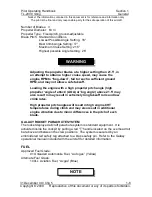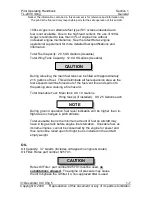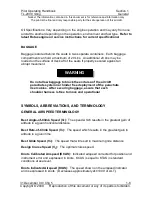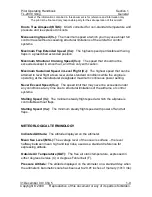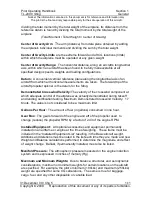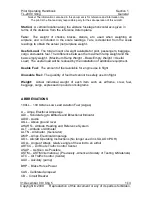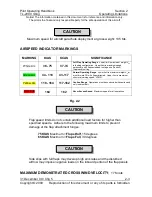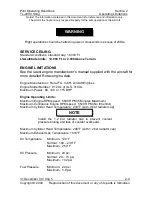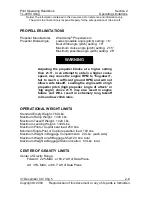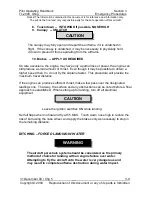
Pilot Operating Handbook
Section 2
TL-2000
Sting
Operating Limitations
Notice! The information contained in this document is for reference and information only.
The pilot is the final and only responsible party for the safe operation of this aircraft.
31 December 09 / Chg 5
2-2
Copyright © 2009 Reproduction of this document or any of its parts is forbidden.
INTRODUCTION
Section 2 includes specific operating limitations and airspeed instrument markings. The
limitations provided in this section should be adhered to for safe operation of the airplane.
This airplane is restricted to VFR/VMC day/night weather conditions
when equipped with the VFR/VMC night minimum equipment list in
accordance with 14 CFR 91.205c. IFR operation must be approved
by the OEM manufacturer. Comply with the FAA regualtions included
in the aircraft operating conditions (airworthiness certification).
Approval will contain specific restrictions on IFR operations. See
page 2.7 for further details.
AIRSPEED LIMITATIONS
V
SPEED
KIAS KCAS
REMARKS
V
NE
Never Exceed Speed
164
162
Do not exceed this speed in any operation.
V
NO
Maximum Structural
Cruising Speed
118
117
Do not exceed this speed except in smooth air,
and even then only do so with caution.
V
A
Maneuvering Speed
118
117
Do not make full or abrupt control movements
above this speed.
V
FE
Maximum Flap Extended
Speed:
Half (Takeoff) Flaps:
Full (Landing) Flaps:
75
65
74
64
Do not exceed these speeds with the given flap
settings. Damage to the flap mechanism may
occur due to excessive air loads.
V
S
Stall Speed (No Flaps)
44
43
Do not attempt to fly slower than this speed at full
gross weight when operating without flaps.
V
S0
Stall Speed (Full Flaps)
38
37
Do not attempt to fly slower than this speed when
operating with full (Landing) flaps.
V
H
Maximum Sustained
Speed in Level Flight
122
120
Maximum speed with maximum continuous rated
engine power in horizontal flight at sea level in
standard conditions at full gross weight.
Speeds shown are for full gross weight at sea level, standard conditions.
Fig. 2-1
CAUTION



